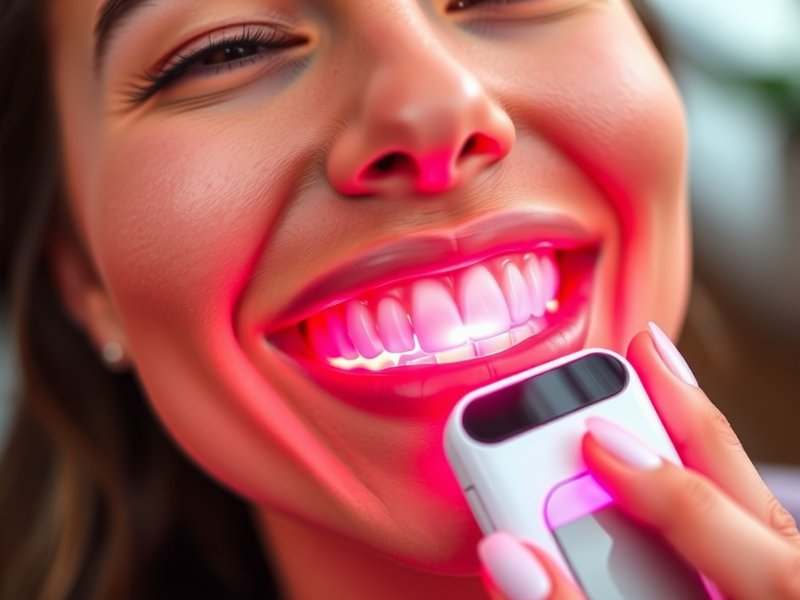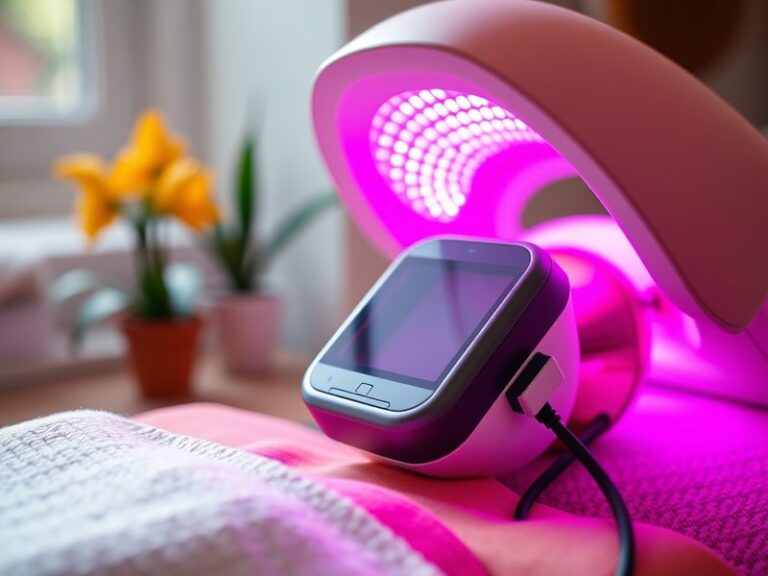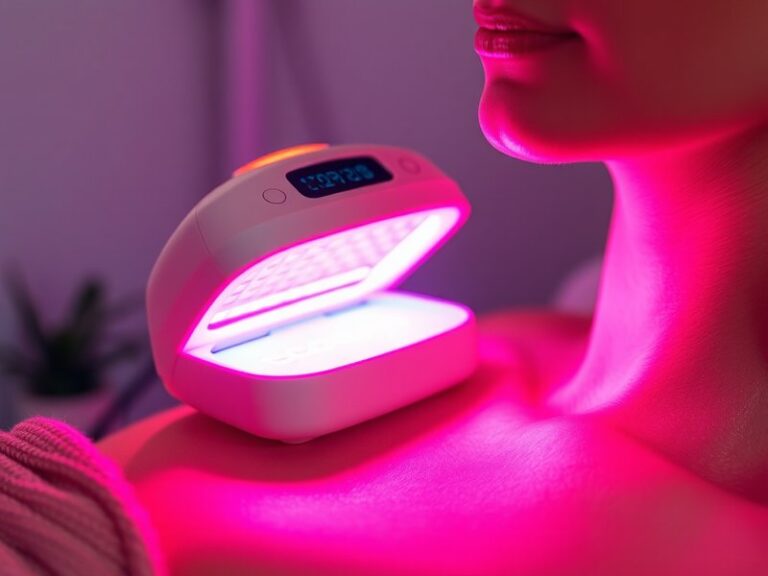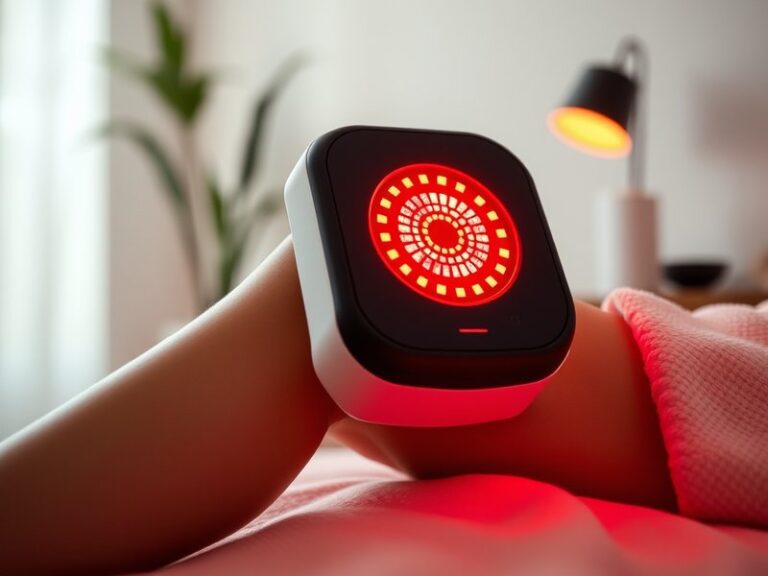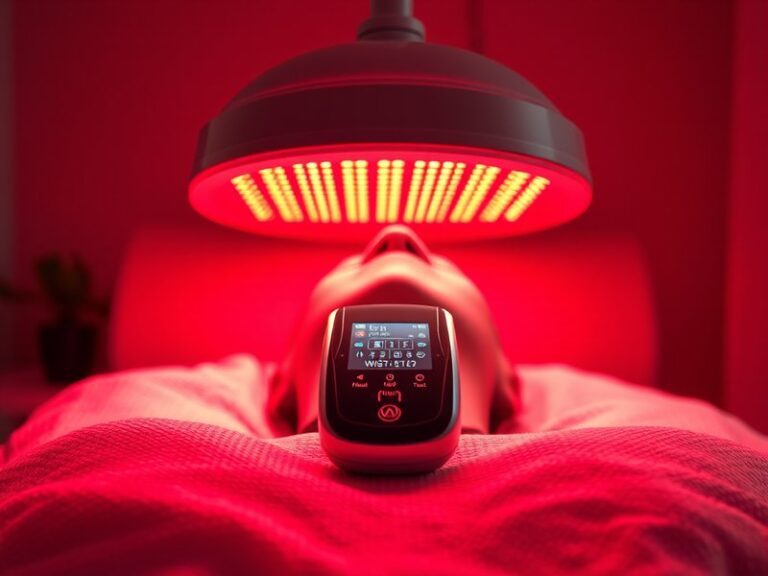Can Red Light Therapy Whiten Teeth?
Can Red Light Therapy Whiten Teeth?
Have you ever wondered if innovative treatments could give you a brighter smile? Red light therapy has gained popularity across various wellness sectors, but can it surprisingly help in teeth whitening?
For the full story, read Can a red bulb be used for red light therapy?
This article will explore the potential of red light therapy to whiten teeth. It will cover the science behind the therapy, the benefits it may offer, and whether it’s a practical solution for achieving a whiter smile, along with alternatives and important considerations for users.
Key Takeaways
- Red light therapy could assist in reducing inflammation and promoting healing, potentially aiding oral health.
- Current research on the effectiveness of red light therapy specifically for teeth whitening is limited and inconclusive.
- There are various traditional methods of teeth whitening that may be more effective and well-studied.
What is Red Light Therapy?
Red light therapy (RLT) is a treatment that uses low-level wavelengths of red light to stimulate cellular function. Commonly used in skin care, pain management, and wound healing, RLT is believed to enhance the body’s natural healing processes by promoting circulation and reducing inflammation.
This therapy typically involves the application of red and near-infrared light to targeted areas for varying durations. Devices such as LED panels or handheld devices are often used in home settings or clinical environments.
What are the Benefits of Red Light Therapy?
Red light therapy offers several potential benefits that could indirectly relate to oral health and teeth whitening.
Promotes Healing of Gum Tissue
RLT may help heal gum tissues by boosting blood circulation and reducing inflammation, which is essential for overall oral health. Healthier gums contribute to a more attractive smile.
Reduces Sensitivity
Many individuals experience tooth sensitivity after traditional whitening treatments. RLT has been suggested to help alleviate this discomfort, making the whitening process more tolerable.
Supports Oral Health
By enhancing cellular function, RLT could potentially improve oral health, which in turn may complement the efforts of a whitening regimen. A healthy mouth is generally more conducive to maintaining whiter teeth.
Discover the full analysis Red Light Therapy Frequency at Planet Fitness
Boosts Collagen Production
Collagen is crucial in maintaining the structure of gums and oral tissues. Red light therapy may stimulate collagen production, contributing to better oral health and aesthetics.
Is it Possible to Whiten Teeth with Red Light Therapy?
While the aforementioned benefits highlight potential advantages, the feasibility of using red light therapy as a primary method for teeth whitening remains unclear. Current studies are limited, and while there are anecdotal reports of success, conclusive scientific evidence is lacking.
What are the Advantages of Using Red Light Therapy for Whitening?
The potential advantages of incorporating RLT into a whitening routine may include:
Non-Invasive Approach
RLT is generally considered safe and non-invasive compared to chemical whitening agents, appealing for those seeking gentler methods.
Reduced Recovery Time
Because RLT can potentially minimize inflammation and sensitivity, it may facilitate a quicker recovery after traditional whitening treatments.
Complementary Treatment
It can be used in conjunction with other whitening methods, potentially enhancing overall effectiveness and minimizing discomfort.
Gentler on Dental Health
Unlike some harsh whitening treatments, RLT avoids the use of abrasive substances, making it a safer option for sensitive teeth.
What are the Disadvantages of Using Red Light Therapy for Whitening?
Despite its benefits, there are notable challenges related to using RLT solely for teeth whitening:
Limited Research
There’s a lack of extensive research and clinical trials substantiating RLT’s efficacy as a standalone teeth whitening treatment, leaving its effectiveness uncertain.
Time-Consuming
Regular sessions may be necessary to see any potential results, which might not be practical for everyone compared to faster methods.
Variable Results
Outcomes can vary from person to person, and not everyone may experience the desired level of whitening, leading to frustration or dissatisfaction.
What are the Things to Consider Before Trying Red Light Therapy?
Before incorporating RLT into your oral care routine, consider the following important factors:
Consultation with a Dental Professional
It’s essential to consult a dentist before starting any new treatment. They can offer personalized advice regarding your specific dental health and needs.
Consideration of Existing Conditions
Certain dental conditions may necessitate caution with RLT. Discussing your oral health history with a professional is critical.
Device Quality and Safety
Ensure that any red light therapy device you consider using is FDA-approved or reputable, as the market has many options that vary in quality.
Follow Manufacturer Instructions
Always adhere to guidelines provided with any RLT device to ensure safe and effective use.
What are the Alternatives to Red Light Therapy for Whitening?
If RLT does not seem suitable for your teeth whitening needs, there are several well-established alternatives:
Whitening Toothpaste
Specific toothpaste designed for whitening contains abrasive agents that help remove surface stains, ideal for maintaining a brighter smile.
Over-the-Counter Whitening Kits
Many whitening kits are available, offering gel trays or strips that use bleaches like hydrogen peroxide for effective results.
Professional Whitening Treatments
Dentist-provided whitening treatments generally yield the quickest and most significant results, often using stronger bleaching agents under controlled conditions.
Natural Remedies
Some people explore natural methods for whitening, such as baking soda paste or activated charcoal, although efficacy and safety can vary.
Conclusion: Is it Recommended to Use Red Light Therapy for Teeth Whitening?
While red light therapy may offer benefits for oral health and comfort during whitening processes, it cannot be recommended as a standalone solution for teeth whitening due to the currently limited evidence of its effectiveness. Traditional methods remain more viable and well-studied. Consulting with a dental professional will help determine the best course of action tailored to your desires and needs for a whiter smile.
Frequently Asked Questions
Can red light therapy be used at home for teeth whitening?
Yes, there are at-home devices available, but efficacy may vary. It’s crucial to choose quality devices and follow guidelines.
How long does it take to see results from red light therapy?
The time to notice results can vary significantly from person to person and may require consistent use over weeks or months.
Are there side effects associated with red light therapy?
RLT is generally considered safe, but users may experience mild discomfort or irritation. It’s wise to consult with a healthcare provider beforehand.
Is red light therapy effective on its own for whitening?
Currently, research does not strongly support the efficacy of red light therapy as an independent whitening method. Traditional whitening solutions may be more effective.
What should I do if I experience sensitivity?
If sensitivity occurs during any teeth whitening treatment, consider consulting with a dental professional to adjust your approach or explore more suitable options.
